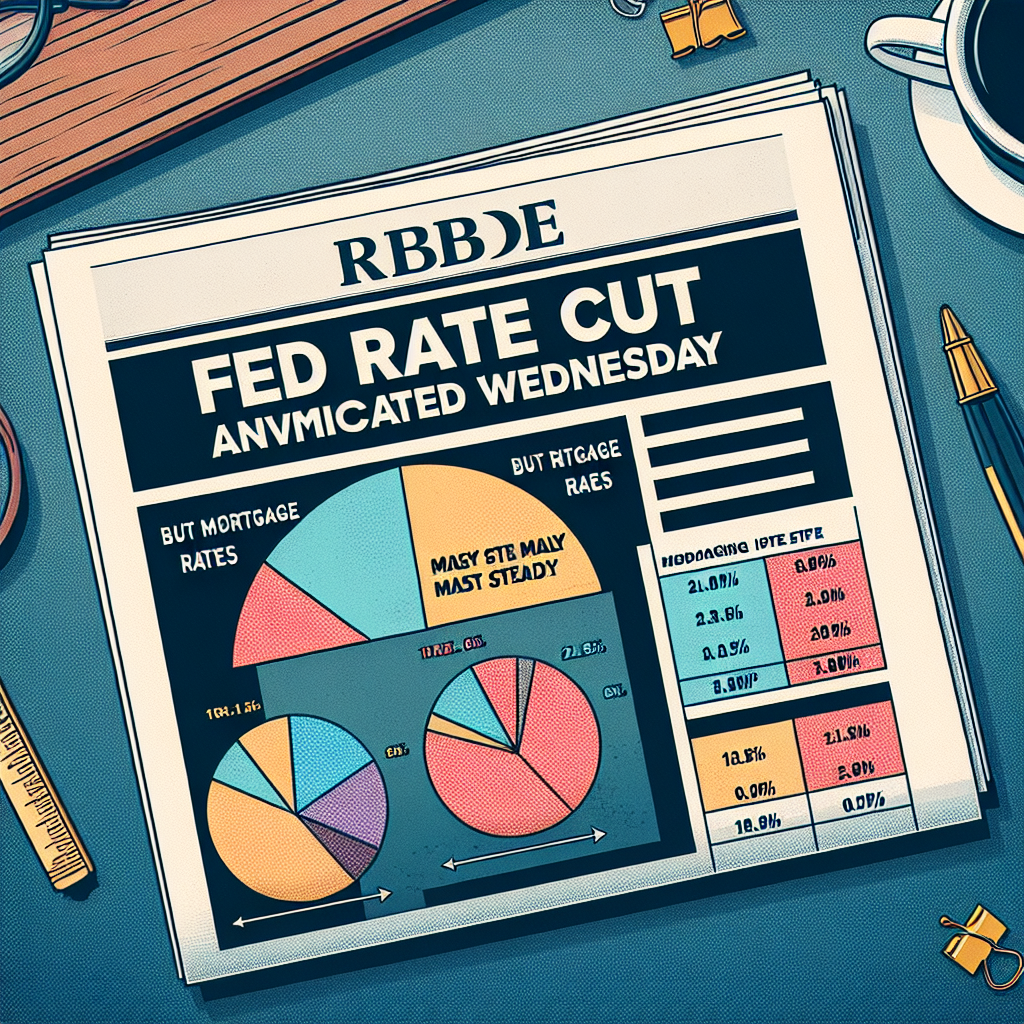Fed Rate Cut Anticipated Wednesday, But Mortgage Rates May Hold Steady
Fed Rate Cut Anticipated Wednesday, But Mortgage Rates May Hold Steady
As the Federal Reserve prepares for its upcoming meeting on Wednesday, market analysts and investors are abuzz with speculation about a potential rate cut. While a reduction in the federal funds rate often leads to lower borrowing costs across the board, the impact on mortgage rates may not be as straightforward. This article delves into the dynamics of the anticipated Fed rate cut and its potential implications for mortgage rates.
Understanding the Federal Reserve’s Role
The Federal Reserve, often referred to as the Fed, plays a crucial role in the U.S. economy by setting the federal funds rate, which influences the cost of borrowing money. This rate is the interest rate at which banks lend to each other overnight and serves as a benchmark for various other interest rates, including those for mortgages, credit cards, and personal loans.
When the Fed cuts rates, it aims to stimulate economic activity by making borrowing cheaper, thereby encouraging spending and investment. However, the relationship between the federal funds rate and mortgage rates is not always direct.
Why Mortgage Rates May Not Follow Suit
While a Fed rate cut can lead to lower mortgage rates, several factors can cause mortgage rates to remain steady or even rise:
- Market Expectations: Mortgage rates are often influenced by market expectations of future economic conditions. If investors anticipate inflation or economic growth, they may demand higher yields on mortgage-backed securities, keeping mortgage rates elevated.
- Global Economic Factors: International events, such as geopolitical tensions or economic slowdowns in major economies, can impact U.S. mortgage rates. For instance, a global flight to safety can drive investors to U.S. Treasury bonds, affecting mortgage rates.
- Supply and Demand Dynamics: The housing market’s supply and demand dynamics can also play a role. If demand for homes is high, lenders may not feel pressured to lower rates, even if the Fed cuts its rate.
Case Studies: Past Fed Rate Cuts and Mortgage Rates
Historically, the relationship between Fed rate cuts and mortgage rates has been mixed. For example, during the 2008 financial crisis, the Fed aggressively cut rates to near zero. While mortgage rates did decline, they did not fall as sharply as the federal funds rate due to heightened risk aversion among investors.
In contrast, during the rate cuts of 2019, mortgage rates saw a more noticeable decline, aligning more closely with the Fed’s actions. This was partly due to a stable economic environment and lower inflation expectations.
Current Economic Indicators
As of now, several economic indicators suggest that mortgage rates may not significantly drop following a Fed rate cut:
- Inflation Concerns: With inflation rates still above the Fed’s target, there is a possibility that mortgage rates could remain steady as lenders hedge against inflation risks.
- Labor Market Strength: A robust labor market with low unemployment rates can lead to higher consumer spending, potentially keeping mortgage rates stable.
- Housing Market Trends: The housing market has shown resilience, with strong demand and limited supply, which could prevent a significant drop in mortgage rates.
Conclusion
While the anticipated Fed rate cut on Wednesday is likely to make headlines, its impact on mortgage rates remains uncertain. Various factors, including market expectations, global economic conditions, and housing market dynamics, will play a crucial role in determining whether mortgage rates will follow the Fed’s lead. Homebuyers and investors should stay informed and consider these factors when making financial decisions. As always, consulting with financial advisors and keeping an eye on economic indicators can provide valuable insights into navigating the ever-changing landscape of interest rates.



